Main menu
Common skin conditions

NEWS
Join DermNet PRO
Read more
Quick links
Introduction How it works Types Compression bandaging Compression hosiery Antiembolism stockings Contraindications
Compression therapy using compression bandaging or graduated compression hosiery is an integral part of the management of varicose veins, venous eczema, and/or stasis ulcers both as an active treatment for healing of ulcers and in preventing recurrences of ulcers.
Compression therapy works by applying controlled pressure to the surface veins, keeping their diameter small and forcing blood back into the deep vein system which in turn pushes the blood uphill towards the heart. Improved blood flow aids in the healing of active ulcers and in preventing ulcer recurrences.
There are several options for compression therapy. Two methods most commonly used are 3–4 layer compression bandaging and elastic graduated compression hosiery.
Bandages with predetermined levels of compression are available; light, moderate, high and extra-high performance. The type of bandage used depends on the severity of the swelling and how much pressure needs to be applied. For example, extra-high performance bandages are reserved for very large and swollen legs.
Compression bandages are useful if there are active ulcers as once the wound is cleaned and dressed the bandage can be easily wrapped around the leg from the toes to the calf. Elasticated bandages provide graduated compression with the highest pressure at the ankle where it is most needed. Padding should be applied in strips over bony prominences to prevent excessive pressure.
Bandages may be left on or reapplied for several weeks until the swelling has gone down. Due to their elasticity as the swelling goes down the bandage maintains the proper amount of pressure. When the ulcer has healed, compression hosiery may be recommended to provide a lesser amount of pressure but enough to maintain proper blood circulation and prevent ulcer recurrences.
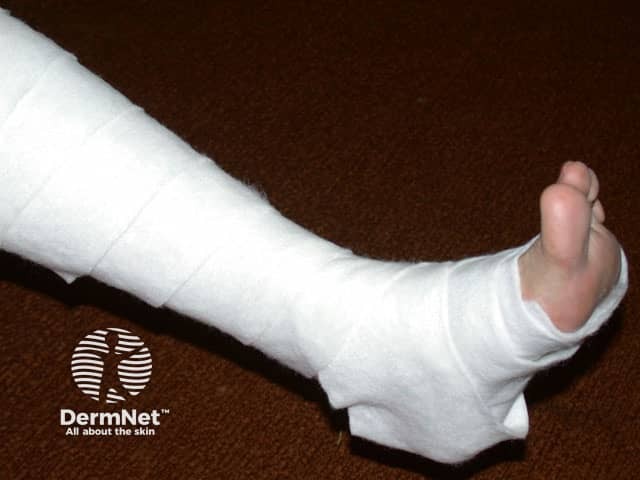
First layer
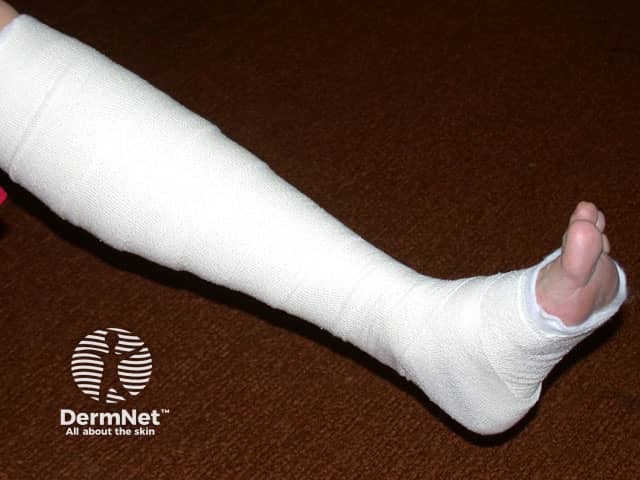
Second layer
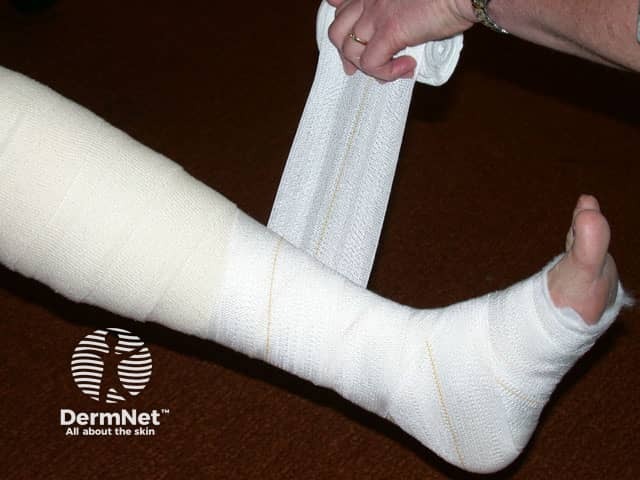
Applying the third layer
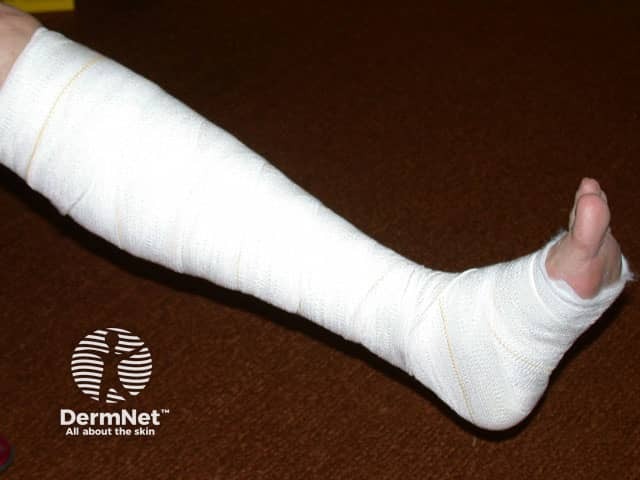
Third layer
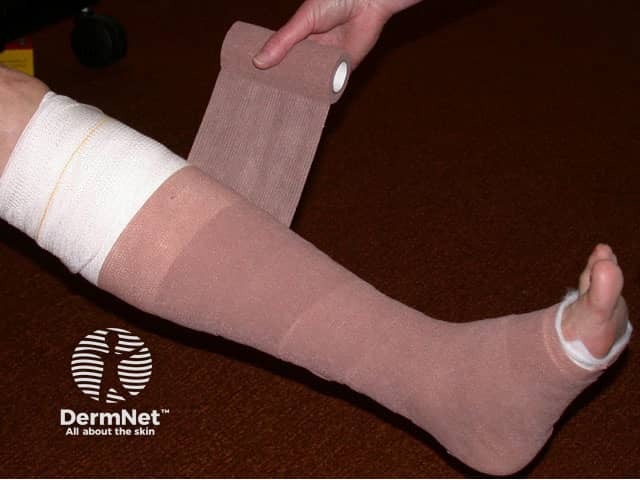
Applying fourth layer
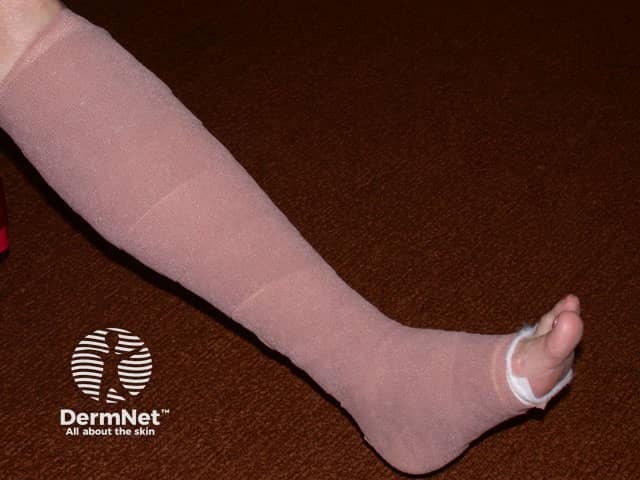
Completed bandage
Compression hosiery can be used as an alternative to compression bandaging for the treatment of active ulcers. It is also very useful for preventing ulcer recurrences. Compression hosiery is classified according to the pressure level applied at the ankle.
Class |
Pressure |
Indication for use |
|---|---|---|
I |
14-17 mmHg |
Varicose veins, mild swelling |
II |
18-24 mmHg |
Moderate to severe varicose veins, mild swelling, small ulcers, prevention of ulcer recurrence |
III |
25-35 mmHg |
Severe varicose veins, chronic venous insufficiency (gross swelling), ulcers, prevention of ulcer recurrence |
Measurements of the lower leg need to be taken to ensure the stocking fits properly. A correctly fitted stocking will produce effective graduation in pressure and be comfortable to wear. A poorly fitted stocking may cause discomfort, trauma and more harm than good. In most cases, stockings are worn up to just below the knee, although thigh length stocking is available if there is swelling above or below the knee or where there is a joint deformity.
Compression hosiery is made from a number of different fibres including nylon, cotton yarn and elastane. Off-the-shelf stockings include circularly knit stockings and flat-bed knit stockings. Flat-bed knit stockings are more flexible than circularly knit stockings, making them easier to get on and off. Net stockings and one-way stretch stockings are available as made-to-measure items.
Studies on compression hosiery show that following removal of the stocking there is little evidence of reversal of the underlying disease process such as improvement in calf muscle function or restoration of the valves. Hence, patients need to be made aware that graduated compression hosiery, in conjunction with exercise, diet, limb elevation and skin care, is part of the long-term management plan of venous insufficiency and leg ulceration.
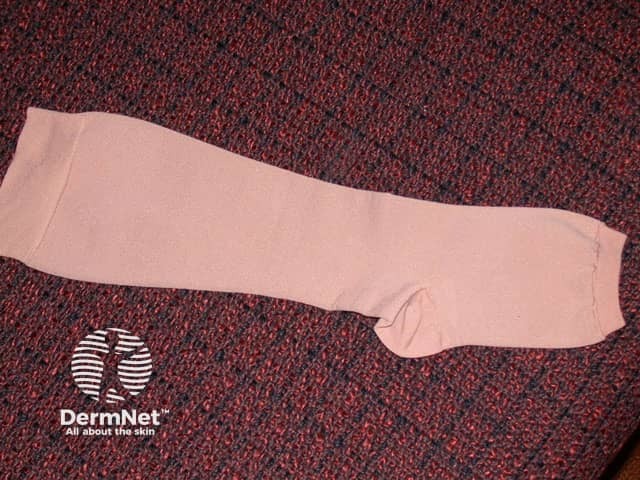
Compression hose
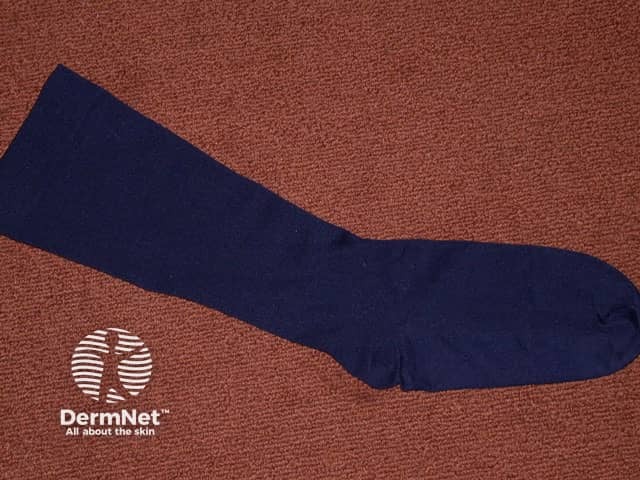
Compression hose
Antiembolism stockings are not the same as support stockings or compression hosiery. A popular type is T.E.D.® stocking. Antiembolism stockings do have graduated compression to speed blood flow up the leg, but they are designed to worn when lying down rather than upright. They are worn postoperatively – the intention is to prevent embolism or blood clots.

Compression hose
Compression should not be used for arterial leg ulcers and should be used with caution in diabetic leg ulcers.